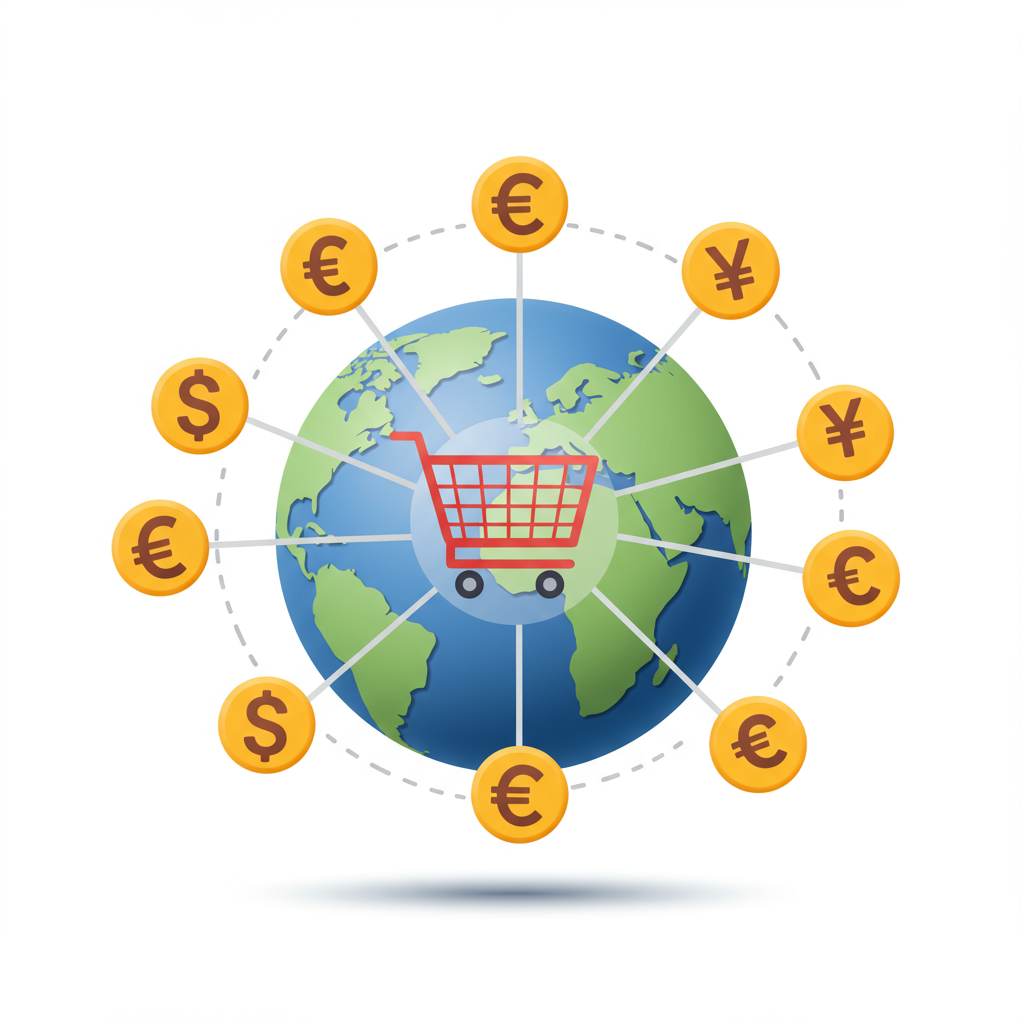Unlock international growth by seamlessly integrating multi-currency conversion on your Shopify store, enhancing customer experience and boosting global sales.
As a Shopify merchant, I’ve seen firsthand how crucial it is to reach customers beyond our local borders. The global marketplace is vast, and ignoring it means leaving significant revenue on the table.
One of the biggest hurdles for international expansion, however, often comes down to currency. Customers prefer to see and pay in their local currency; it builds trust and simplifies their purchasing decision.
This is where multi-currency conversion becomes not just a feature, but a fundamental best practice for any serious e-commerce business looking to scale globally.
In this article, I want to share my insights and best practices for effectively managing multi-currency on your Shopify store, ensuring a seamless experience for your international customers.
Shopify has made significant strides in simplifying multi-currency, primarily through Shopify Payments and the introduction of Shopify Markets. These tools are your foundation.
First, let’s clarify a critical distinction: display currency versus transaction currency. Display currency is what your customer sees on your product pages and cart.
Transaction currency, on the other hand, is the currency in which the actual payment is processed. With Shopify Payments, these can often be the same, which is ideal.
My first and most important recommendation is to enable Shopify Payments. It’s the gateway to Shopify’s native multi-currency capabilities, allowing you to sell in multiple currencies without complex third-party integrations.
Once Shopify Payments is active, you can leverage Shopify Markets. This powerful feature allows you to define specific markets (countries or regions) and assign a primary currency to each.
For instance, I might set up a market for Europe with EUR as the primary currency, and another for Canada with CAD. Shopify then automatically converts your base store prices to these currencies.
When it comes to exchange rates, Shopify Payments uses daily updated rates from leading financial data providers. This ensures your prices are always current, reflecting market fluctuations.
However, it’s important to understand that these are dynamic rates. While convenient, they mean the exact converted price might vary slightly from day to day.
A key best practice I’ve adopted is to manage rounding. Shopify allows you to set rounding rules for converted prices. I always recommend rounding to familiar denominations (e.g., .99 or .00) to make prices feel more natural to local customers.
For example, if a product converts to $23.47 USD, I might set a rule to round it to $23.50 or even $23.99, depending on my pricing strategy. This small detail significantly enhances the customer experience.
Another crucial aspect is transparent communication. Always make it clear to your customers which currency they are viewing and which currency they will be charged in.
A prominent currency selector in your store’s header or footer is essential. Many Shopify themes offer this functionality natively, or you can use a dedicated app if your theme doesn’t.
I also advise against showing the original base currency price alongside the converted price unless absolutely necessary. It can create confusion. Focus on the local currency experience.
When a customer proceeds to checkout, ensure the currency remains consistent. Shopify Payments handles this seamlessly, but if you’re using a different gateway for certain markets, verify the currency consistency.
Consider the implications for refunds and returns. When you issue a refund, Shopify Payments will refund the amount in the currency the customer originally paid in, using the exchange rate at the time of the refund.
This means if the exchange rate has changed significantly, the customer might receive slightly more or less in their local currency than they originally paid, though the base currency amount remains the same. Be prepared to explain this if asked.
Beyond just currency, think about local payment methods. While Shopify Payments covers many, some markets prefer specific local options like iDEAL in the Netherlands or Sofort in Germany. Integrating these can boost conversion rates.
Don’t forget about reporting. Shopify’s analytics allow you to view sales by currency, which is invaluable for understanding your international market performance and identifying your most profitable regions.
What do you think about these strategies so far? Are there any specific challenges you’ve faced with multi-currency?
Finally, always test your multi-currency setup thoroughly. Place test orders from different IP addresses (using a VPN) to simulate the customer experience in various markets.
Check product pages, cart, checkout, and order confirmation emails to ensure currency display and conversion are working as expected.
In summary, embracing multi-currency on Shopify is no longer an option but a necessity for global growth. By leveraging Shopify Payments and Markets, focusing on transparency, and optimizing the customer experience, you can unlock new international revenue streams.
It’s about building trust and making it as easy as possible for anyone, anywhere, to purchase from your store. I believe these best practices will set you on the right path.






